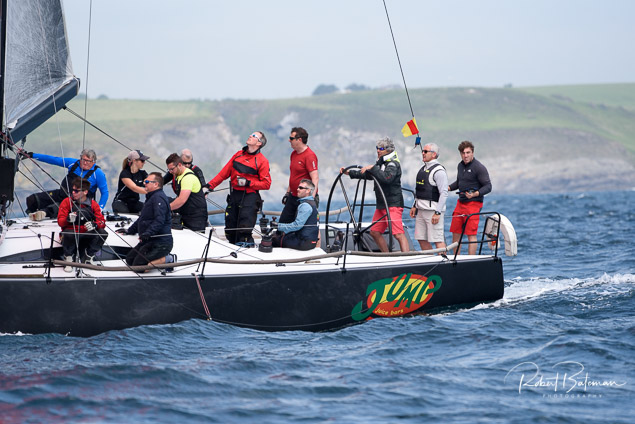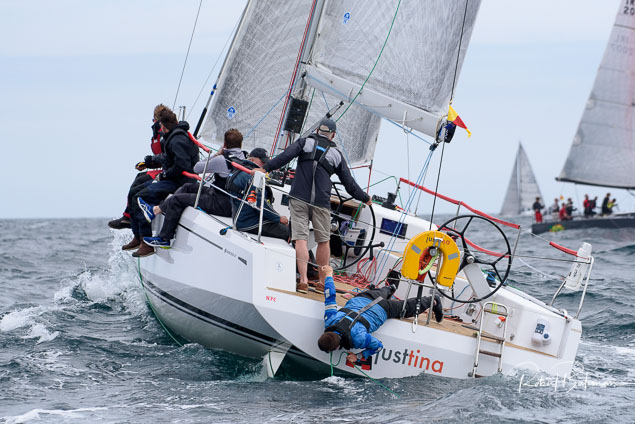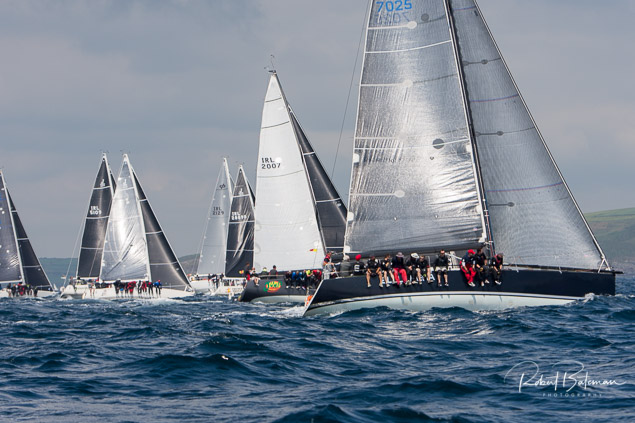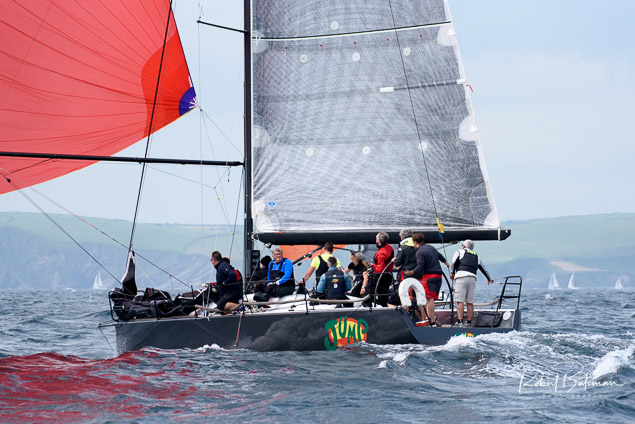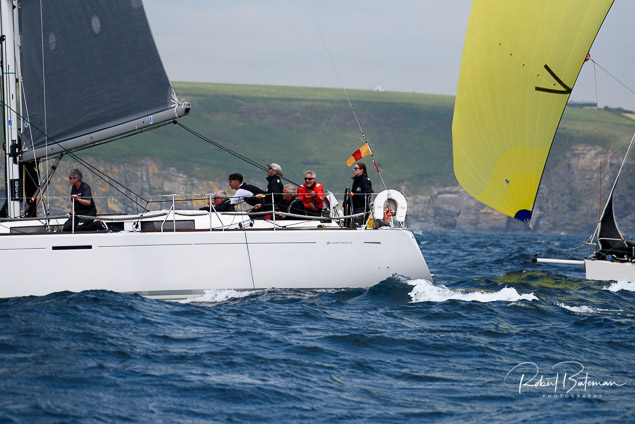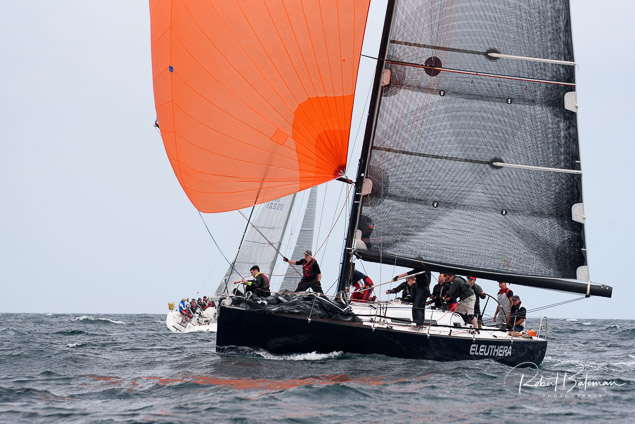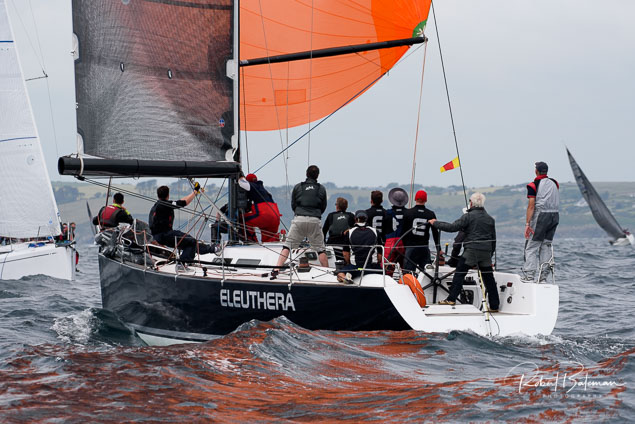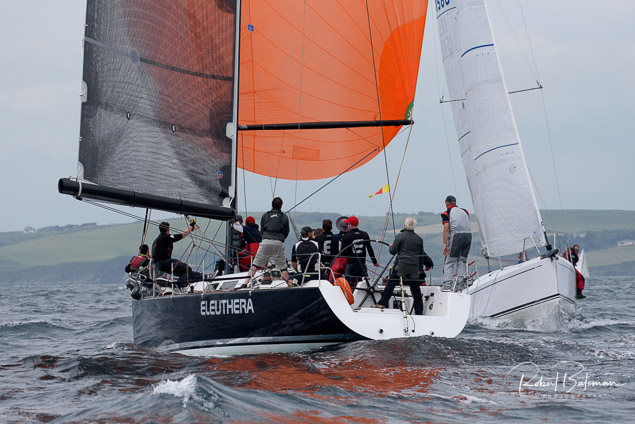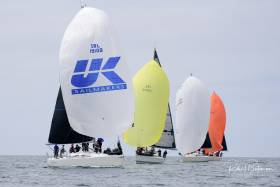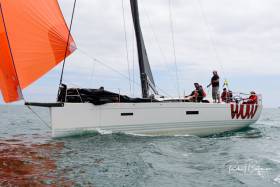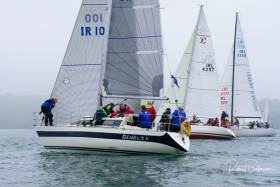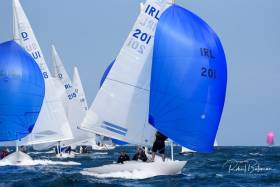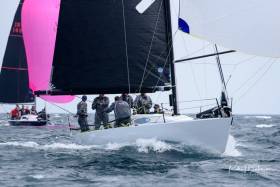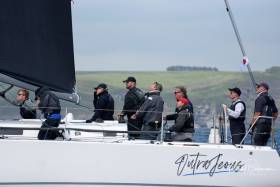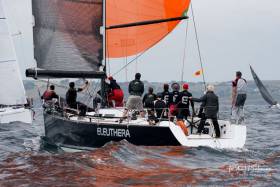Displaying items by tag: Sovereign's Cup
'Mata' Wright Crew Win Irish Half Ton Cup at Kinsale as Checkmate XVIII Wins Class Two
In an intense battle of the Half Tonners, Michael Wright's Mata briefly overtook Class Two overall leader Nigel Biggs's Checkmate XVIII in the closing races of the O'Leary Life Sovereign's Cup in Kinsale today.
As Afloat predicated here, Half Tonners dominated the 19-boat IRC Two fleet and took the top five places overall.
As well as IRC2 and ECHO honours, the seven competing Half Tonners in IRC 2 were also racing for the Irish Half-Ton IRC Cup that was staged in tandem.
After a sluggish start on Wednesday, the new Howth Yacht Club Half-Ton campaign took wins in races three, four and five to overhaul the Manchester sailor but Biggs representing the Royal Irish and Howth Yacht Clubs had a 'do or die' final race with Mata. A win for Wright in the penultimate race brought him one point ahead of Biggs who then won the match-race for the final as the pair were unbeatable for the top two places in the Sovereign's biggest fleet.
 Nigel Biggs's Checkmate XVIII was the winner of Class Two Photo: Bob Bateman
Nigel Biggs's Checkmate XVIII was the winner of Class Two Photo: Bob Bateman
However, Wright still emerged with the Irish Half-Ton Cup to sit alongside his Division Two national championship title from earlier this month on Dublin Bay.
As Afloat predicated here, Half Tonners dominated the 19-boat fleet and took the top five places overall.
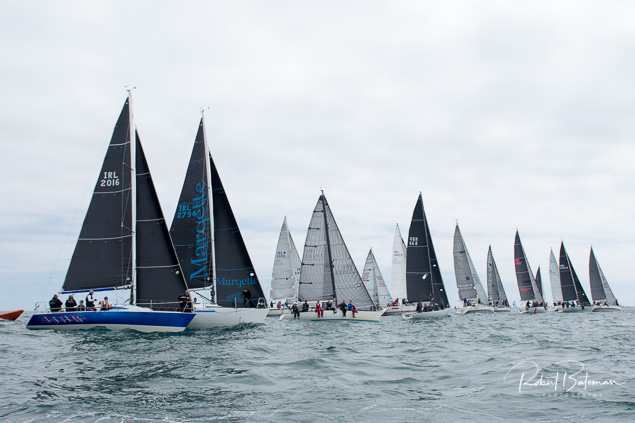 The Class Two Sovereign's Cup fleet Photo: Bob Bateman
The Class Two Sovereign's Cup fleet Photo: Bob Bateman
Third in IRC Two was another Howth boat, Dave Cullen's Checkmate XV.
See full overall results here for class 2 and here for the Half Ton Cup and read WM Nixon's review of the 2019 Sovereign's Cup here.
Despite a disqualification (DSQ) in the penultimate race of the five-race series last night, Richard Colwell and John Murphy's new J109 campaign from Howth Yacht Club held the lead in Class One of the O'Leary Life Sovereign's Cup to take overall victory this afternoon.
'Outrajeous' discarded the DSQ result after a protest room decision last night and counted two wins and two seconds to be three points clear of Paul and Deirdre Tingle's X-34 Alpaca from Royal Cork who broke the stranglehold of the J109s in Class one, to finish as runner-up.
Brian Jones's sistership Jelly Baby from Royal Cork was third.
Outrajeous has been showing good speed and with Olympian Mark Mansfield aboard, was the one to watch in this class, even though John Maybury's Joker II pushed her hard in Wednesday's opening races.
 Paul and Deirdre Tingle's X-34 Alpaca Photo: Bob Bateman
Paul and Deirdre Tingle's X-34 Alpaca Photo: Bob Bateman
The overall result is as predicted by Afloat in its pre-regatta article here.
See full overall results here and read WM Nixon's review of the 2019 Sovereign's Cup here.
George Sisk's new XP40 Wow sailed to success in the O'Leary Life Sovereign's Cup today beating bigger sistership the XP50 Freya on her home waters off Kinsale in the Regatta's Coastal Class.
The Royal Irish Yacht Club crew led the regatta from the beginning and scored three wins in the three-race series that was cut short on Thursday due to gales.
Conor Doyle's Freya was second overall in the eight boat class. Third was Doyle's Royal Cork clubmate, Thomas Roche in Meridian.
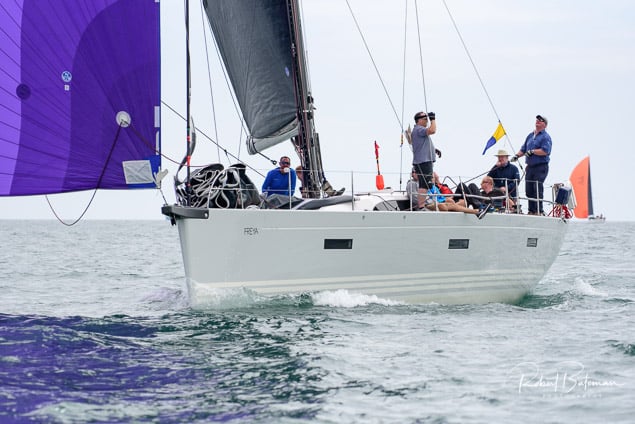 Conor Doyle's XP 50 Freya
Conor Doyle's XP 50 Freya
The Coastal class enjoyed a 15 nautical-mile race today between the new racing mark at the Old Head of Kinsale Golf links and the Sovereigns rocks off Oysterhaven.
See full overall results here and read WM Nixon's review of the 2019 Sovereign's Cup here.
With five wins from five races and discarding a first place in her overall score tally, the Greystones Sailing Club's Grand Soleil 44 'Eleuthera' made a clean sweep of Class Zero of the O'Leary Life Sovereign's Cup off Kinsale today.
It marks a successful return to the south coast for Frank Whelan's County Wicklow campaign that won the Cork Week crown in Cork Harbour in 2018.
Second overall was Conor Phelan's Jump Juice from Royal Cork on eight points. Denis & Anne Marie Murphy's Nieulargo, a Grand Soleil 40 was third.
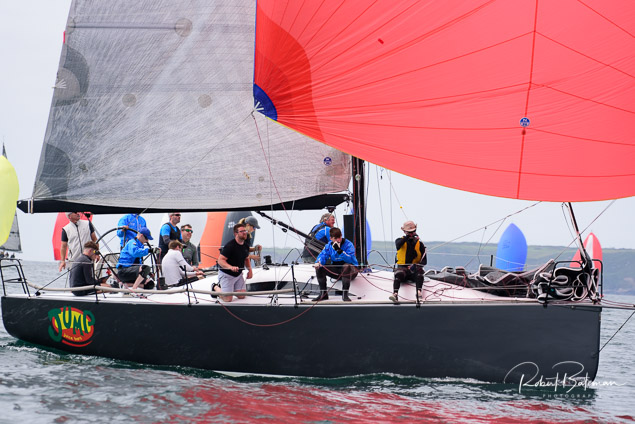 The Ker 36.7 Jump Juice Conor Phelan Photo: Bob Bateman
The Ker 36.7 Jump Juice Conor Phelan Photo: Bob Bateman
The result chimes with Afloat's pre-regatta prediction here.
See full overall results here and read WM Nixon's review of the 2019 Sovereign's Cup here.
Sovereign's Cup White Sails Photo Gallery (Day 3)
Day Three of the Sovereign's Cup in Kinsale today started in the harbour for both of the White Sail fleets in low mist and drizzle.
Former Kinsale Yacht Club Commodore and veteran Irish Paralympian John Twomey was the leader of Class 2 on Shillelagh after day one while Waterford Harbour Sailing Club’s Shane Statham on Slack Alice was the leader of the other White Sail fleet going into today's rounds.
Photo gallery by Bob Bateman below
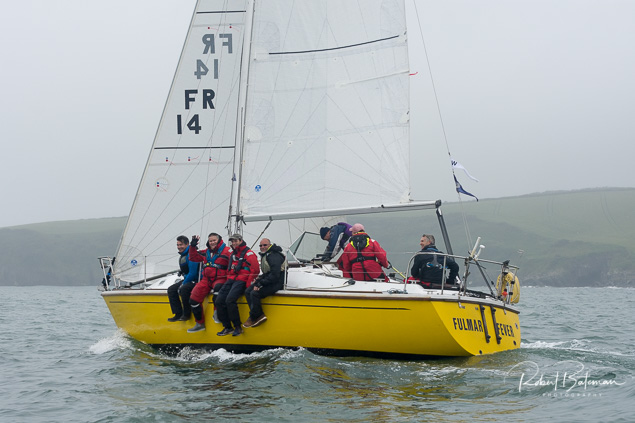

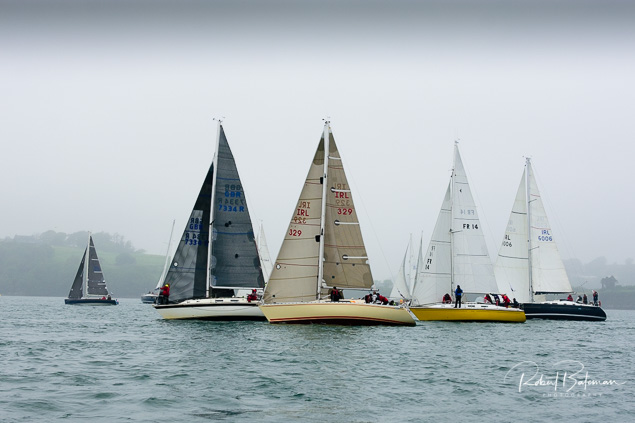

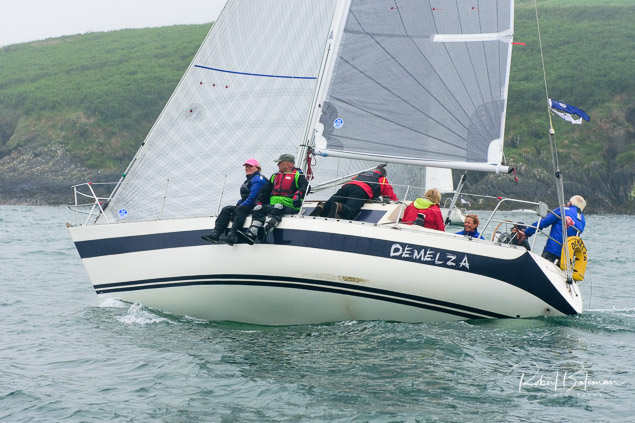
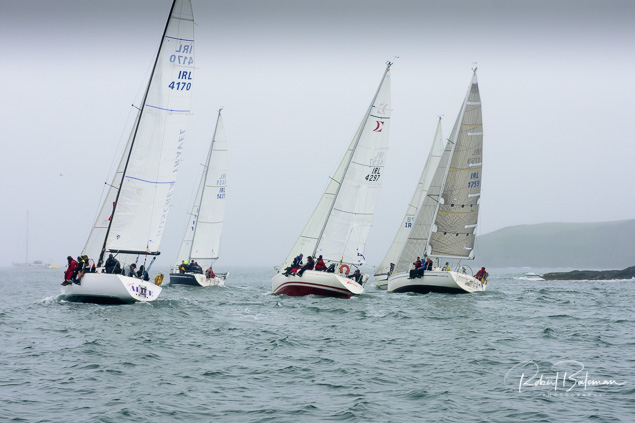


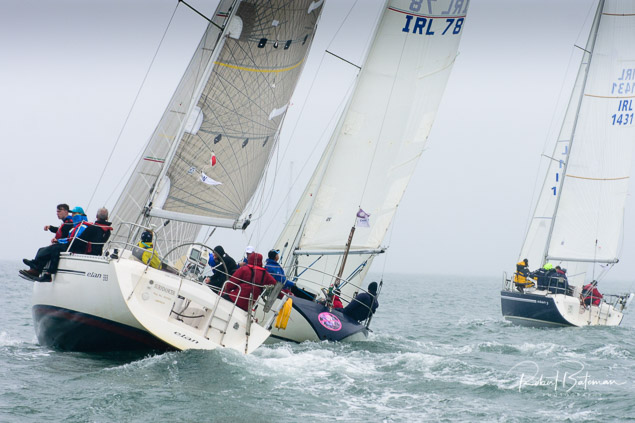

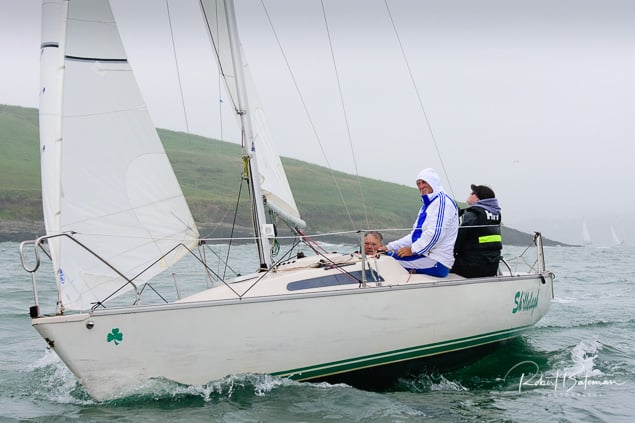
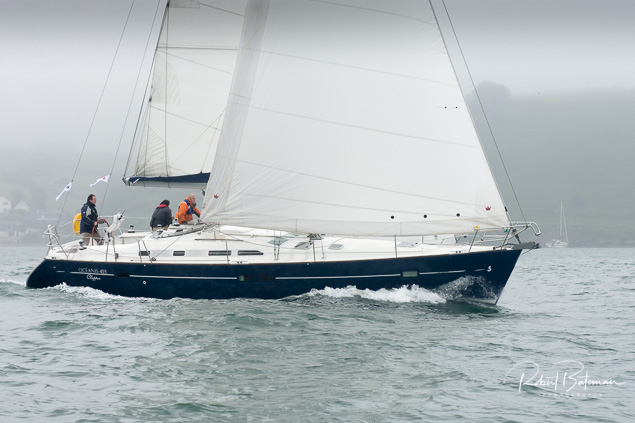
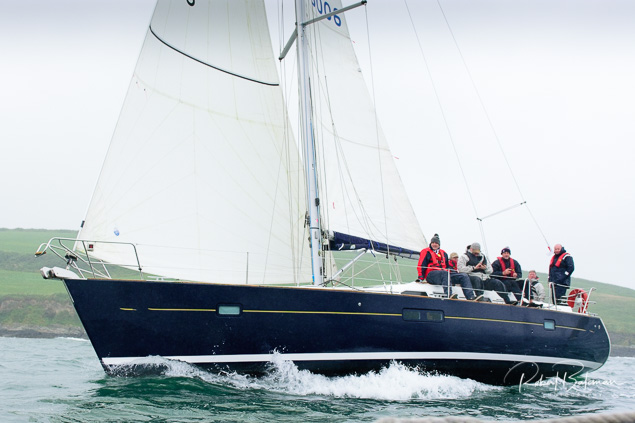
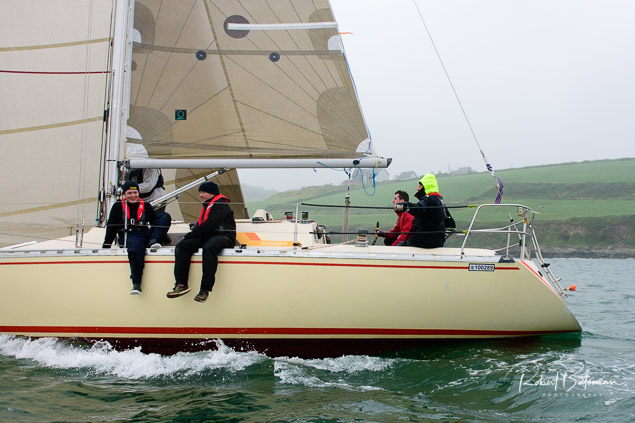

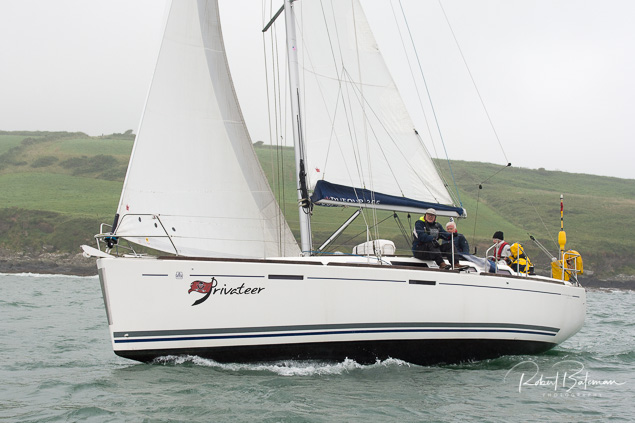
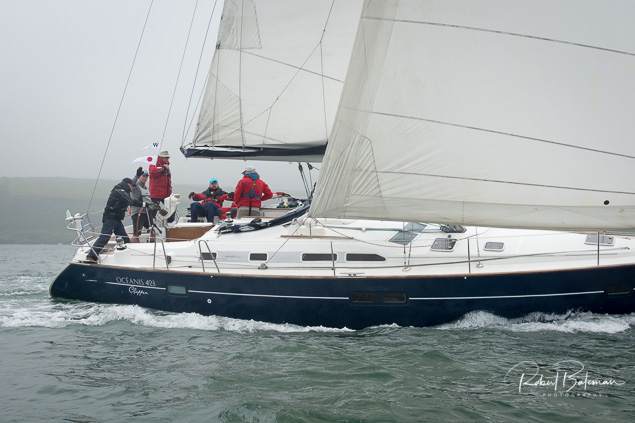
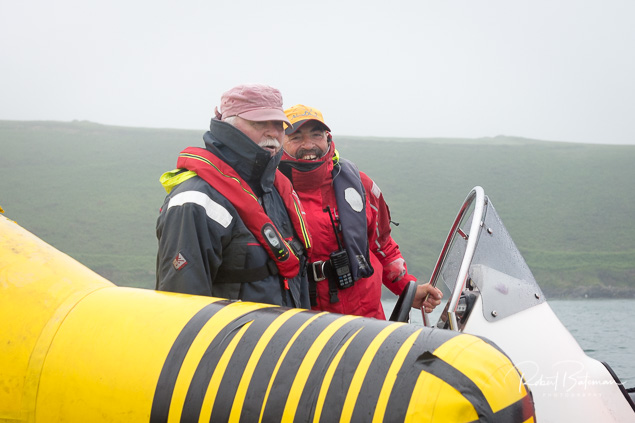


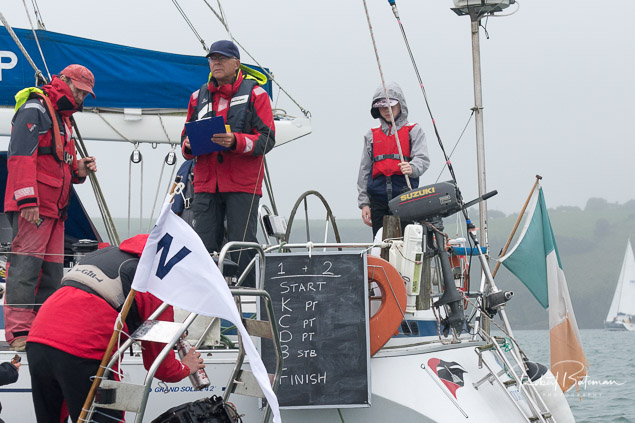
Kinsale Yacht Club has cancelled today's second day of racing at its 2019 Sovereign's Cup regatta due to easterly winds forecast to gust to 40-knots by lunchtime writes Bob Bateman.
The 95-boat fleet completed a full programme of racing in yesterday's opening day of the O'Leary Life sponsored series and Afloat's coverage from all the classes yesterday is in one handy link here
As predicted by Afloat here, some of the early leaders in the series (that concludes on Saturday) already have their sights set on overall victory.
All are competing for class wins as well as the overall Sovereign’s Cup for the best boat under IRC rating and the Portcullis Trophy for best boat under ECHO performance handicapping.
Day One - A three-way tie on four points overall makes it tight at the top of a 16-boat Dragon fleet competing at its first-ever showing in the O'Leary Life sponsored Sovereign's Cup off Kinsale.
After two races sailed, Martin Byrne's Jaguar Sailing Team (201) leads by dint of his second race victory this afternoon but Kinsale Yacht Club's own 'Little Fella' (Good/Kingston/ Furney) is second and Byrne's Royal St George YC clubmate Peter Bowring sailing Phantom lies third.
The next three boats are also tied on points.
The Kinsale event doubles as the Irish National Dragon Championships in a build up to Kinsale Yacht Club's staging of the Dragon Gold Cup in September 2020.
Somewhat unusual easterly breezes for Kinsale and a lumpy sea with 16-knots provided Principal Race Officer Jack Roy with testing conditions for day one of the Cup across three courses.
Racing is scheduled to continue tomorrow morning at the Cup but easterly winds are forecast as gusting as high as 40 knots.
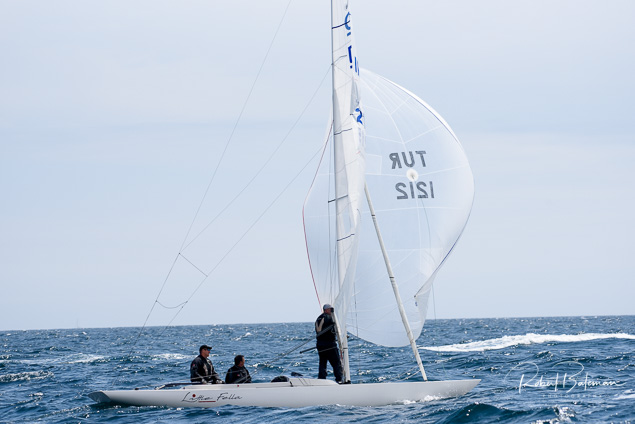 Cameron Goods Little Fella is second overall
Cameron Goods Little Fella is second overall
Results are here. All provisional and subject to protest.
Scroll down for photo gallery from Day One of the Sovereigns' Cup Dragon action by Bob Bateman below
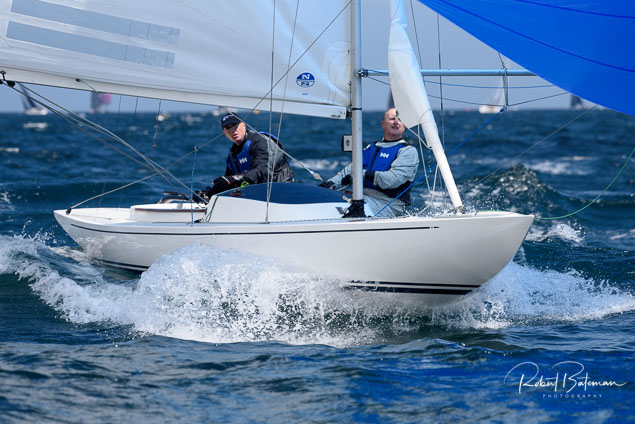 Peter Bowring's Phantom is third overall
Peter Bowring's Phantom is third overall
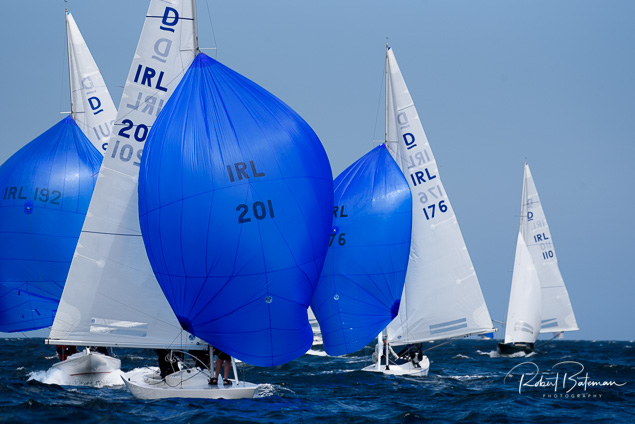


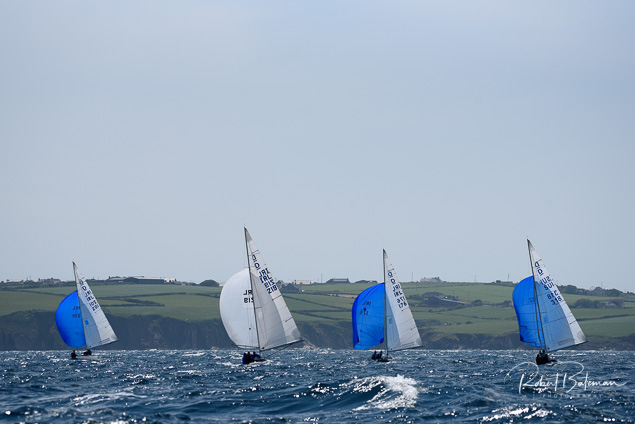
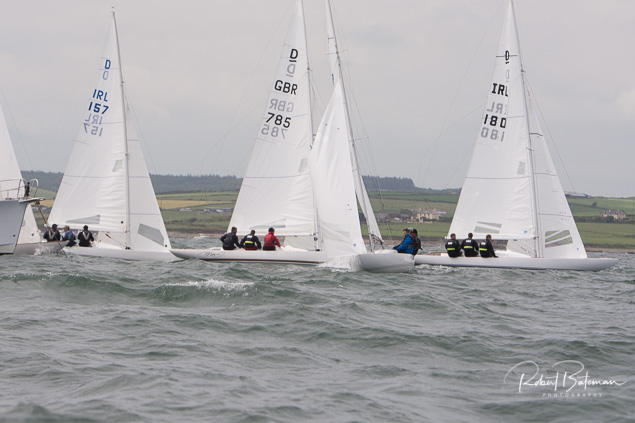

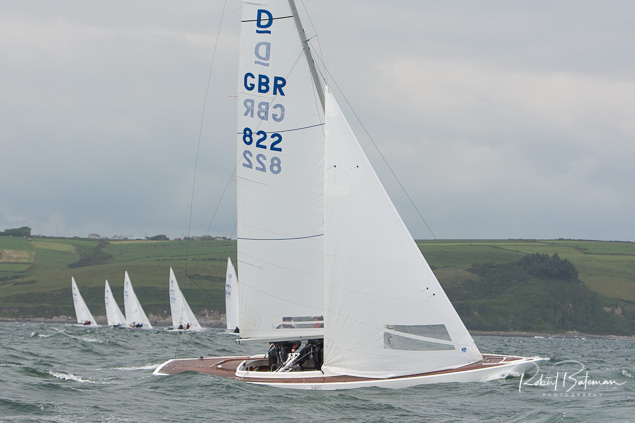
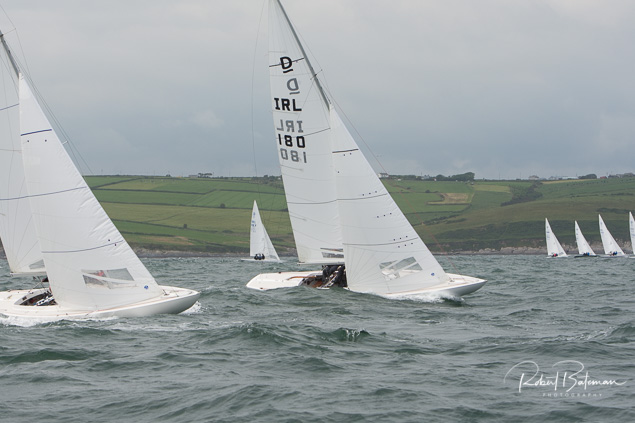


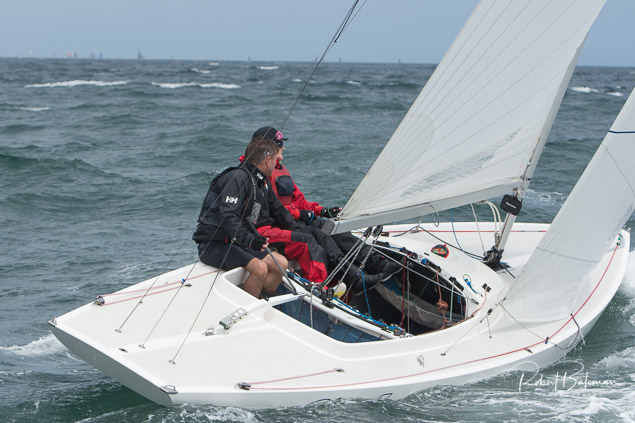

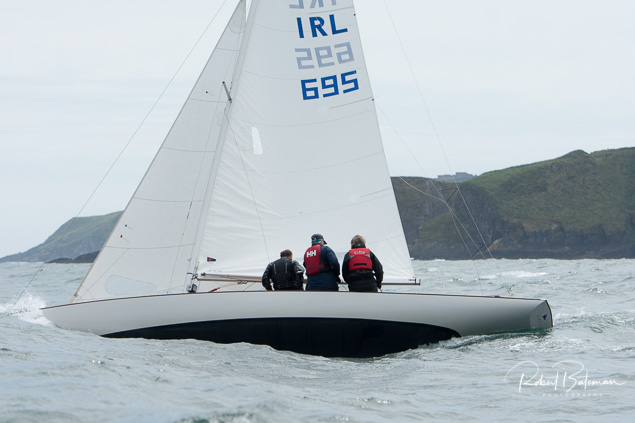
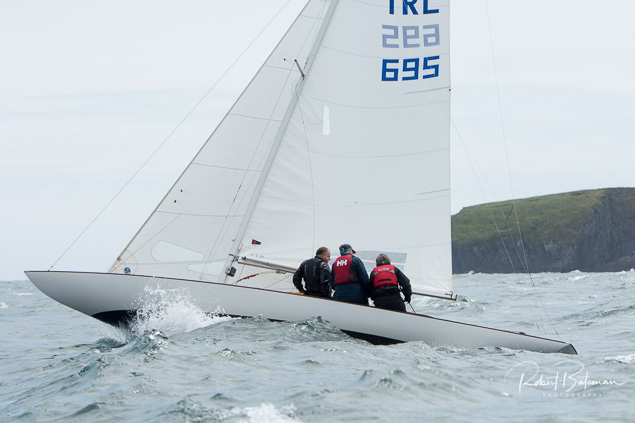
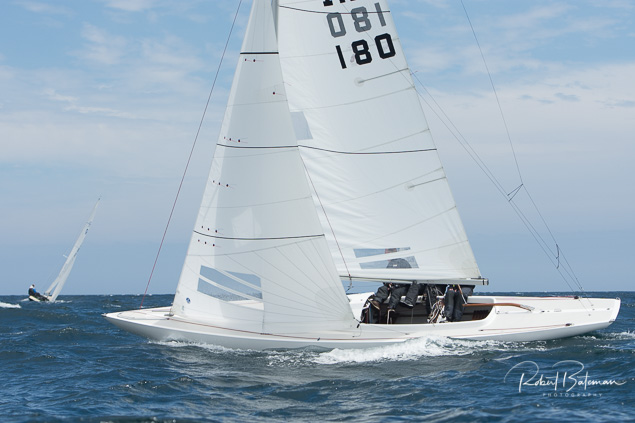
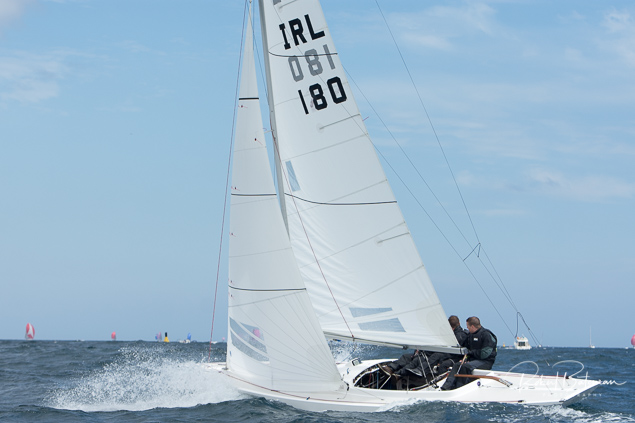
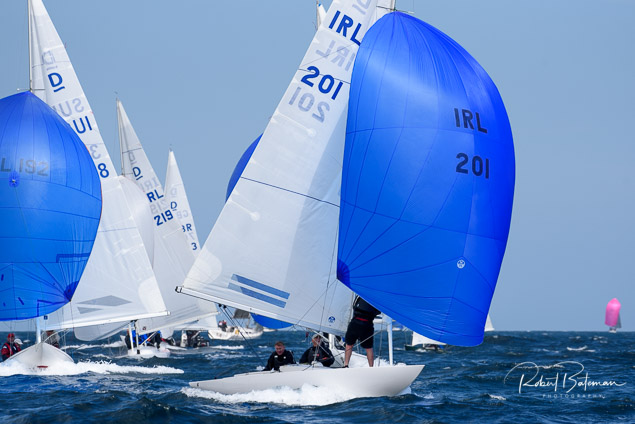
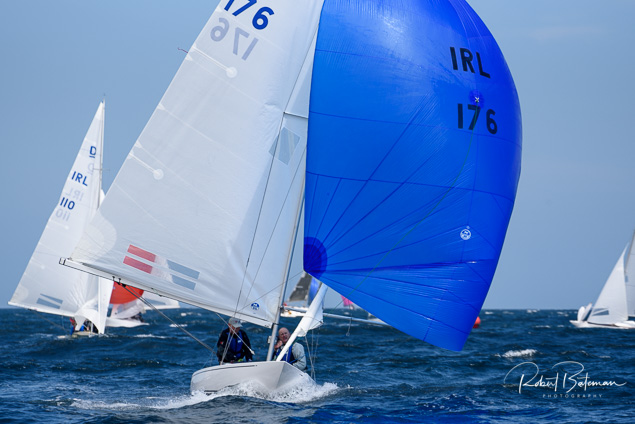
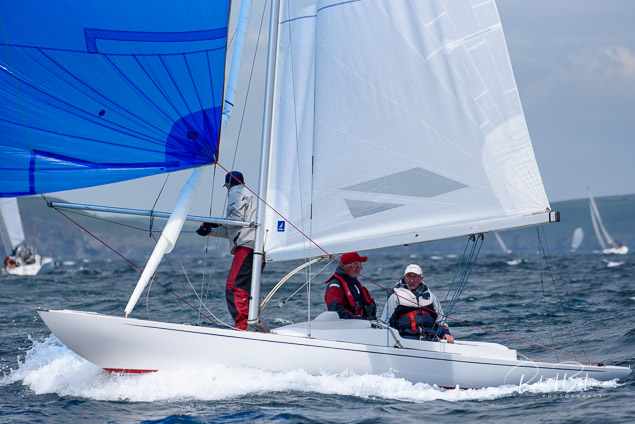

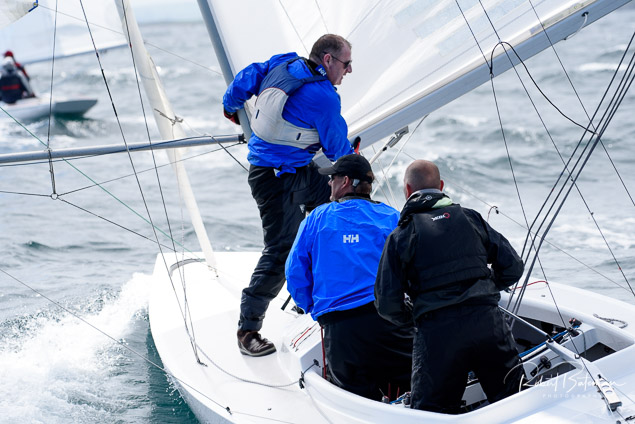
It's turning into an early battle of the Half Tonners in Class Two of the O'Leary Life sponsored Sovereign's Cup off Kinsale writes Bob Bateman.
Class Two is the Cup's biggest class with 19 boats competing and Half Tonners occupy five of the top six places so far. The event also comprise the Irish Half Ton Championships.
Nigel Biggs' Checkmate XVIII (Royal Irish YC / Howth YC) leads the Class Two IRC (and the Half Tonner class) counting a 1, 2 to be three points clear of John Swan's Harmony of Howth Yacht Club. As regular Afloat readers will know, talented trimmer Neil Makley from North Sails UK, is racing with Biggs and is already making his presence felt, it appears.
Breaking up the Half Tonners is Royal Cork's well-sailed Olson 30 (Kieran Collins).
Somewhat unusual easterly breezes for Kinsale and a lumpy sea with 16-knots provided Principal Race Officer Jack Roy with testing conditions for day one of the Cup across three courses.
Racing is scheduled to continue tomorrow morning at the Cup but easterly winds are forecast as gusting as high as 40 knots.
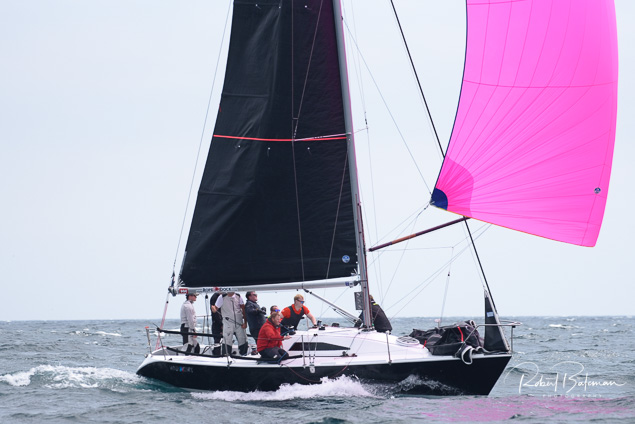 John Swan's Harmony is second overall after two races sailed in Kinsale
John Swan's Harmony is second overall after two races sailed in Kinsale
Results are here. Scroll down for photo gallery from Day One of the Sovereigns' Cup Class Two and Half Tonner action by Bob Bateman below

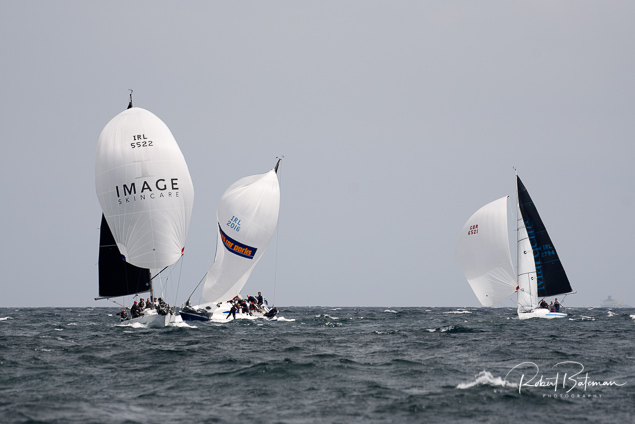

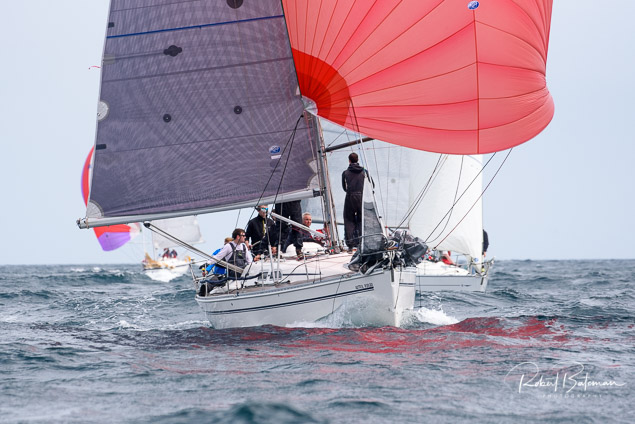
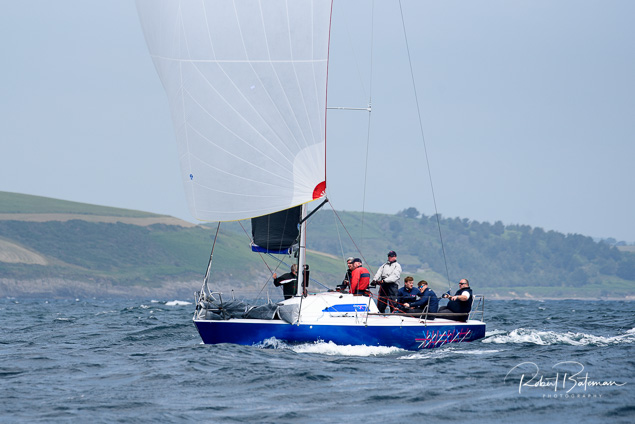
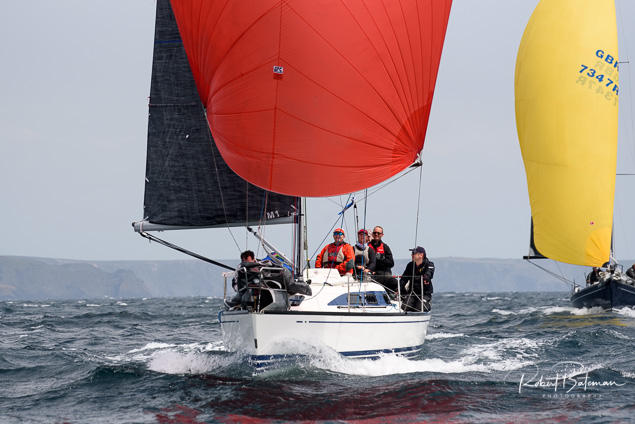
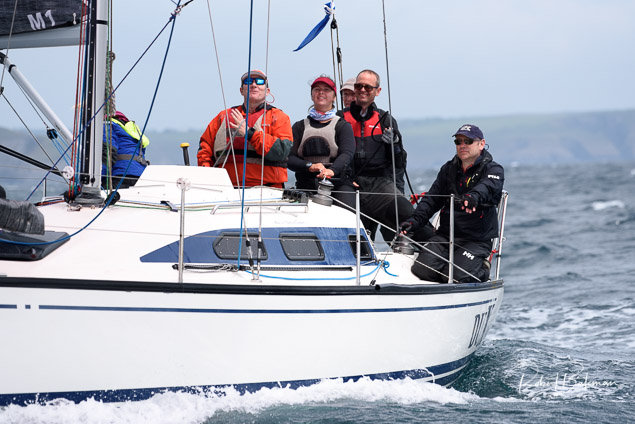
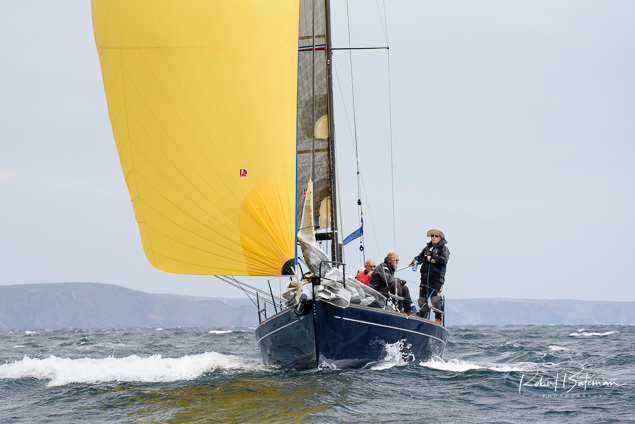
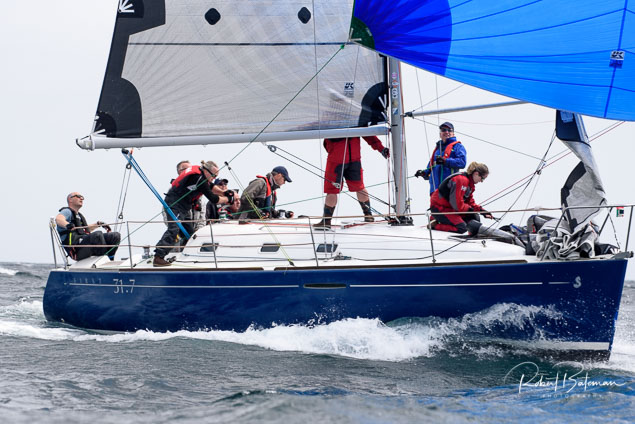
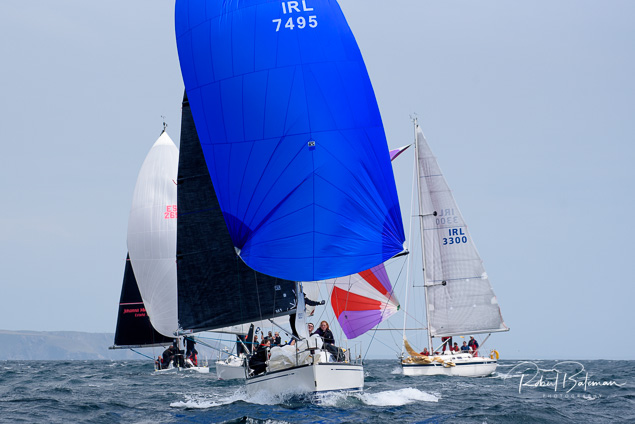

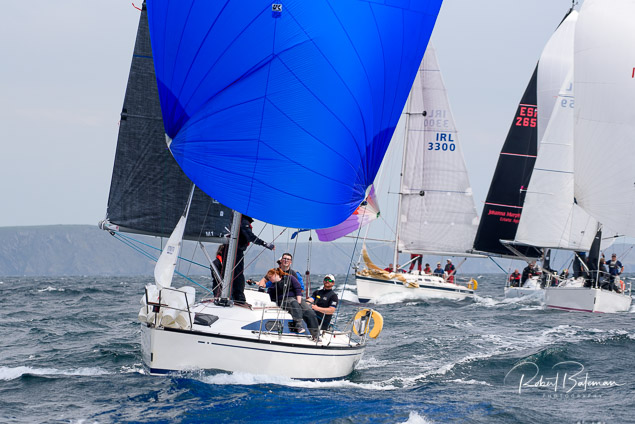

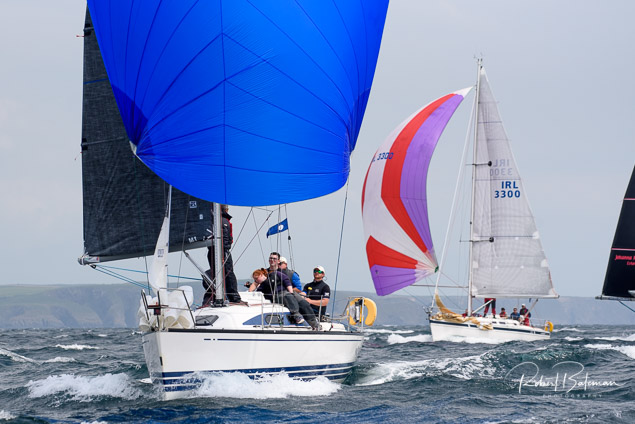
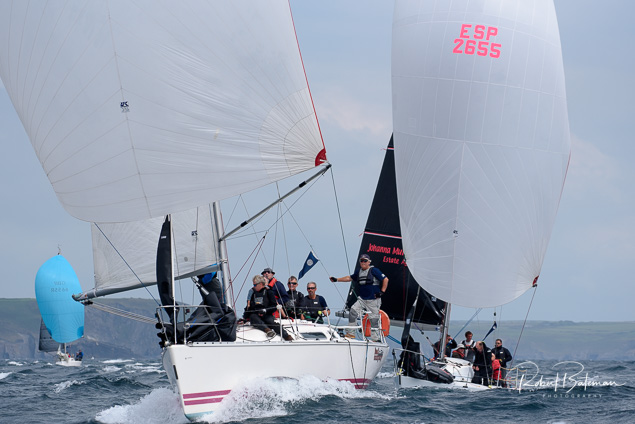
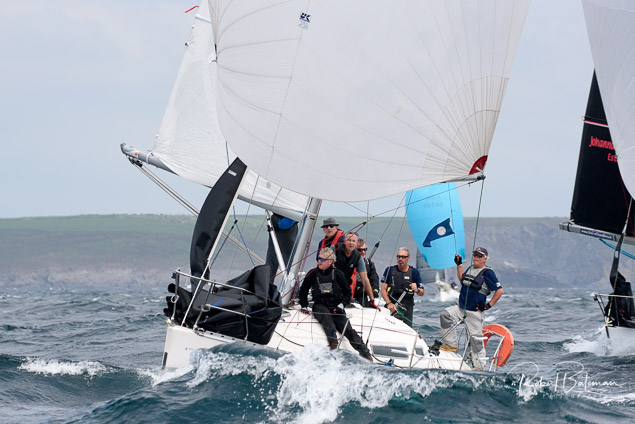
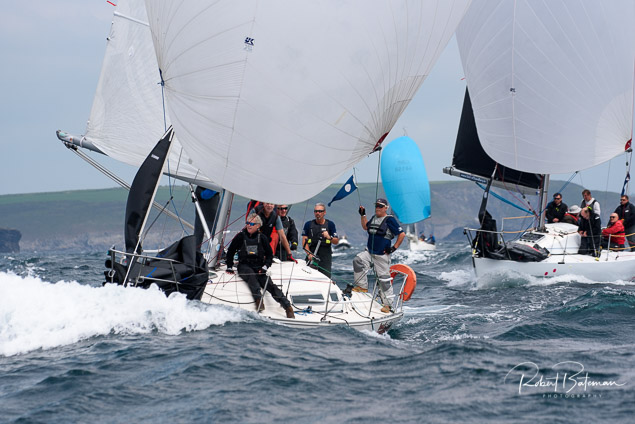
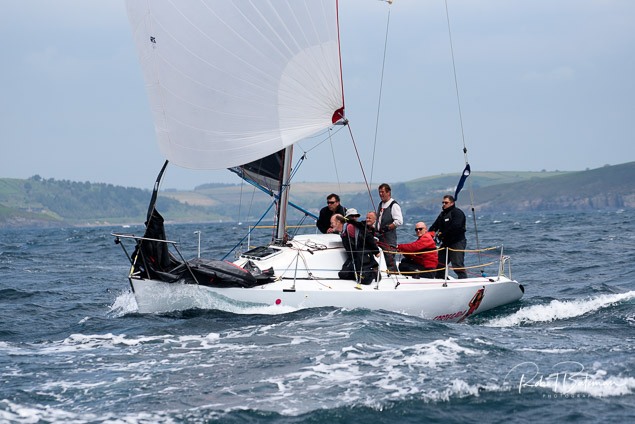
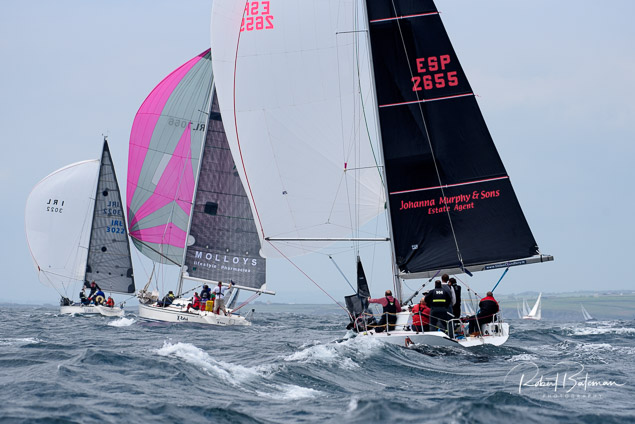
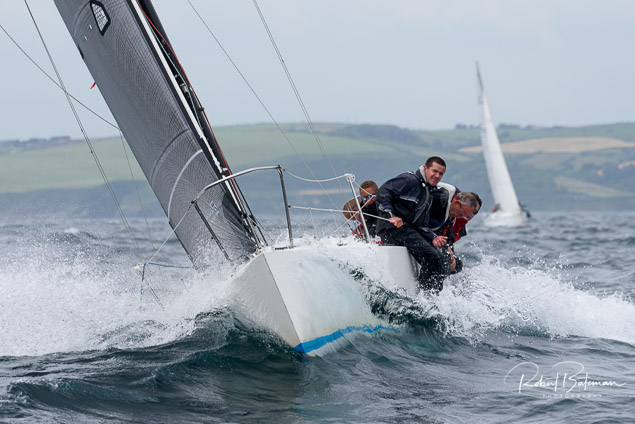


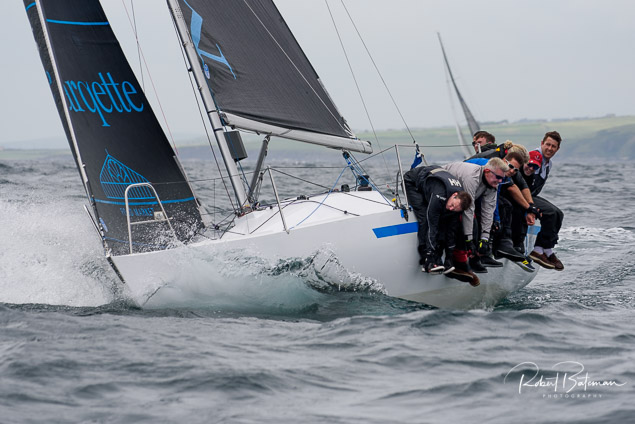
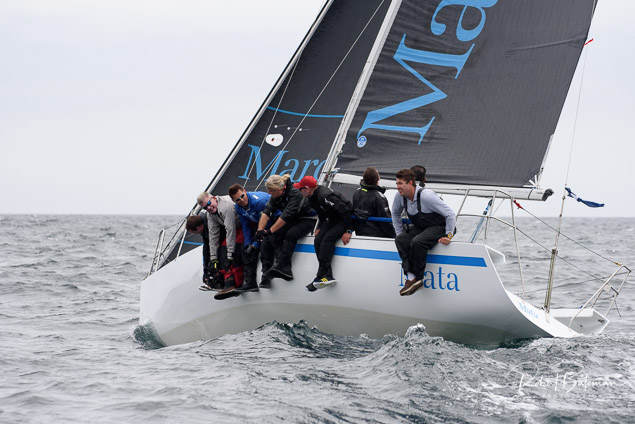
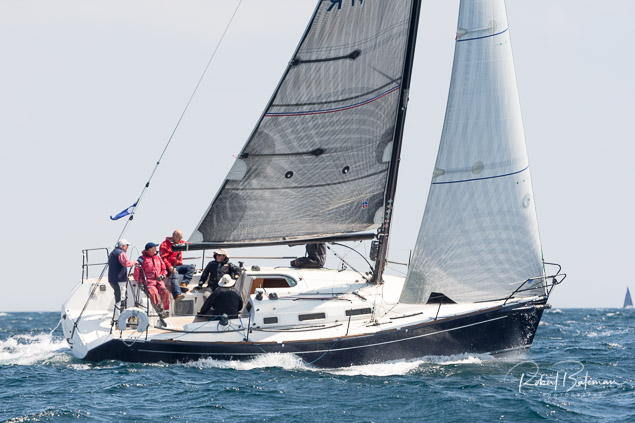
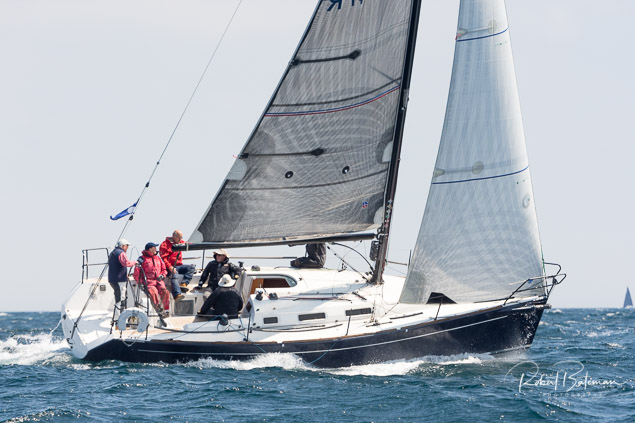
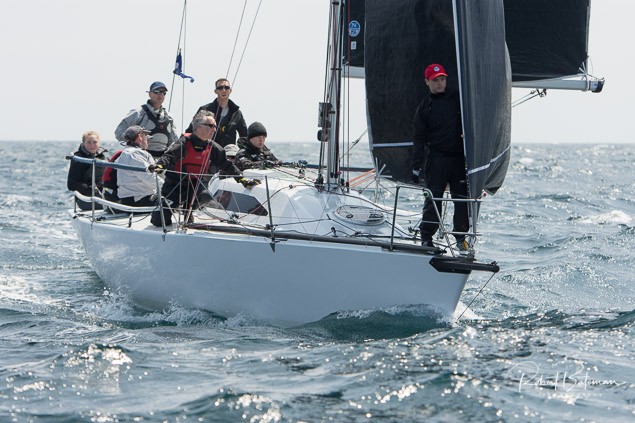
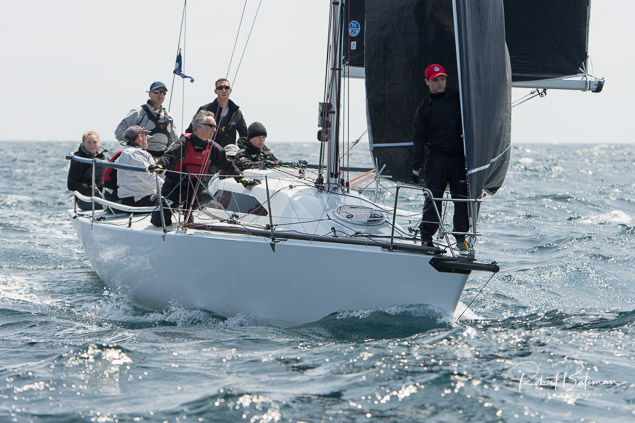
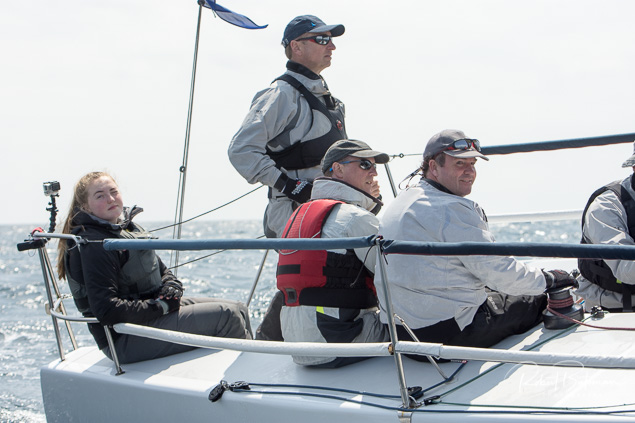
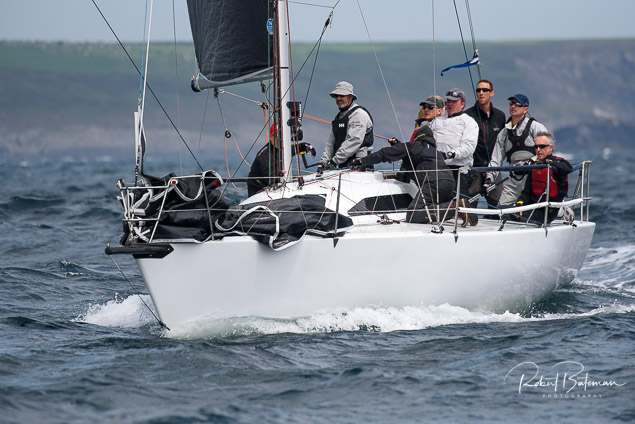
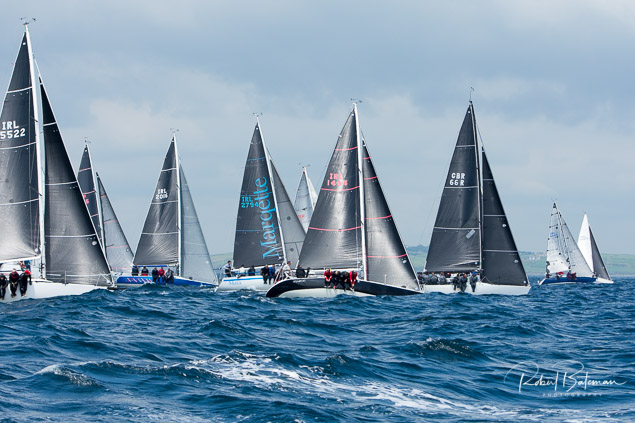

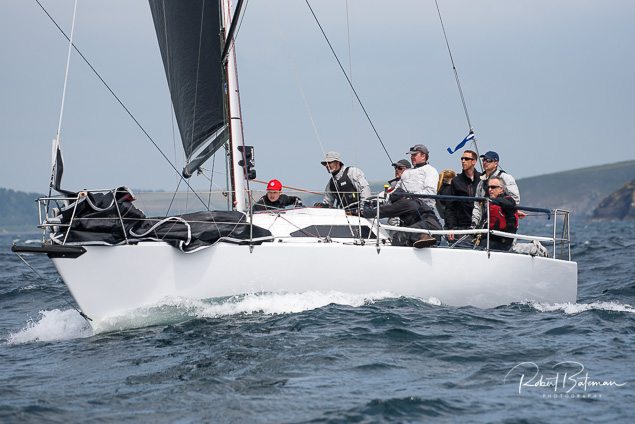
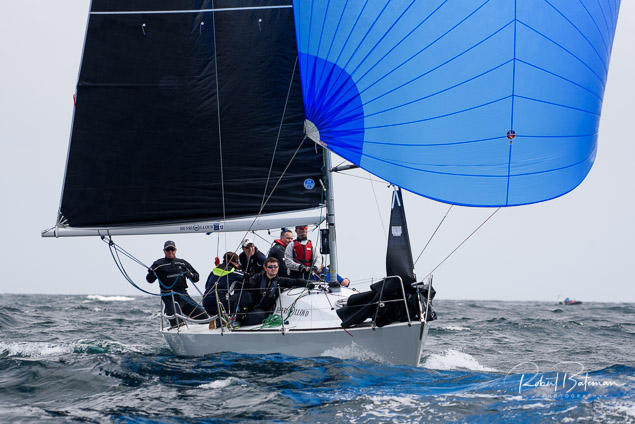
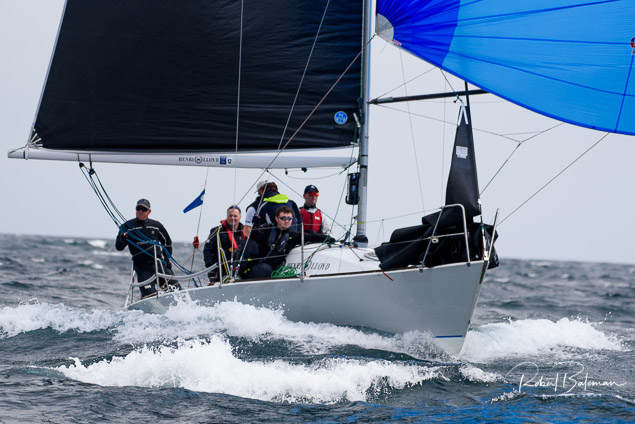
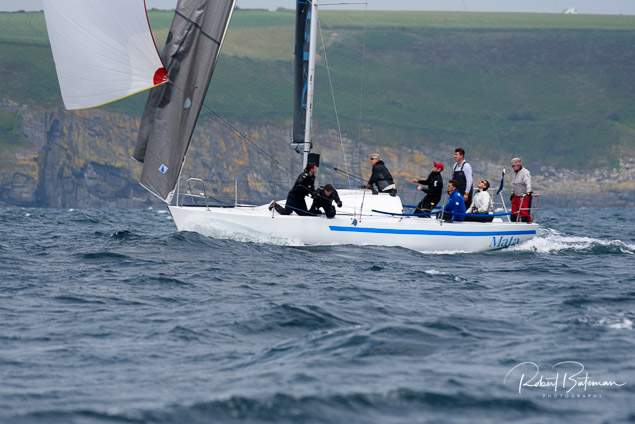
A battle of Olympic proportions ensued at the top of Class One IRC of the O'Leary Life sponsored Sovereign's Cup off Kinsale today with two former Olympic Star helmsmen on the top two rivals overall writes Bob Bateman.
There should be no surprise that in this nine-boat fleet, J109s occupy the top three places given eight of the fleet are J designs.
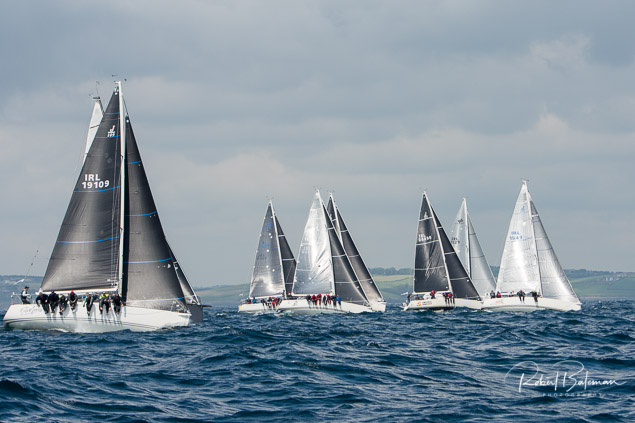 A Class One start at the Sovereigns Cup
A Class One start at the Sovereigns Cup
Leading with a 1,2 scored in today's first two races is Howth Yacht Club's new J109 campaign Outrajeous (Richard Colwell and John Murphy).
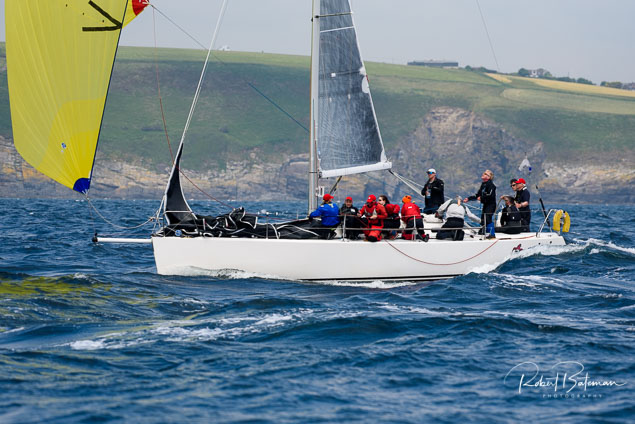 Olympic helmsman Peter O'Leary is on board with John Maybury's Joker II
Olympic helmsman Peter O'Leary is on board with John Maybury's Joker II
Onboard is Mark Mansfield, the four-time Olympian calling the shots. In second place is the four-time winner of the ICRA Championships, John Maybury's Joker II who has brought in Beijing and London Star helmsman Peter O'Leary for tactical support.
In third place, is Brian Jones's Jelly Baby from Royal Cork.
Somewhat unusual easterly breezes for Kinsale and a lumpy sea with 16-knots provided Principal Race Officer Jack Roy with testing conditions for day one of the Cup across three courses.
Racing is scheduled to continue tomorrow morning at the Cup but easterly winds are forecast as gusting as high as 40 knots.
Results are here. All provisional and subject to protest.
Scroll down for photo gallery from Day One of the Sovereigns' Cup Class One action by Bob Bateman below
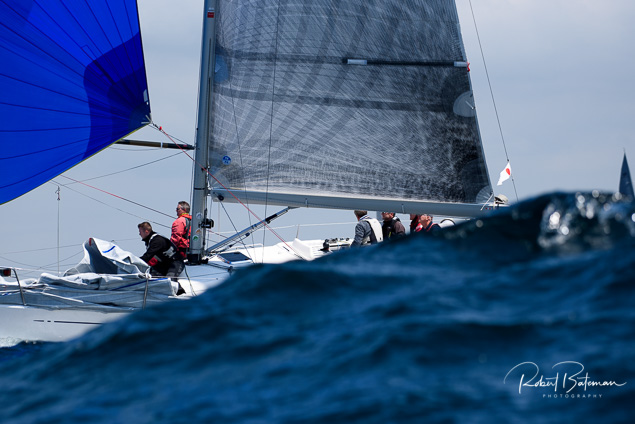
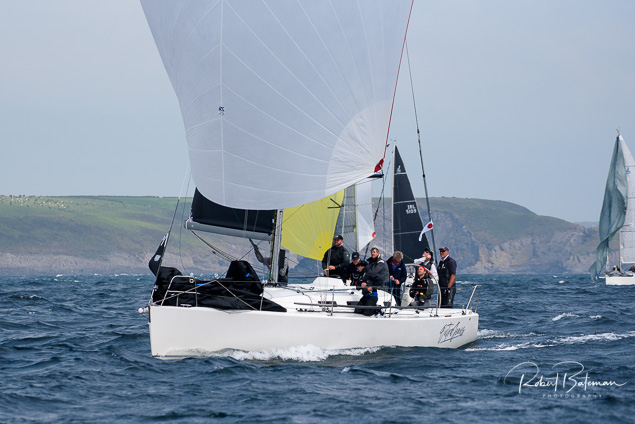

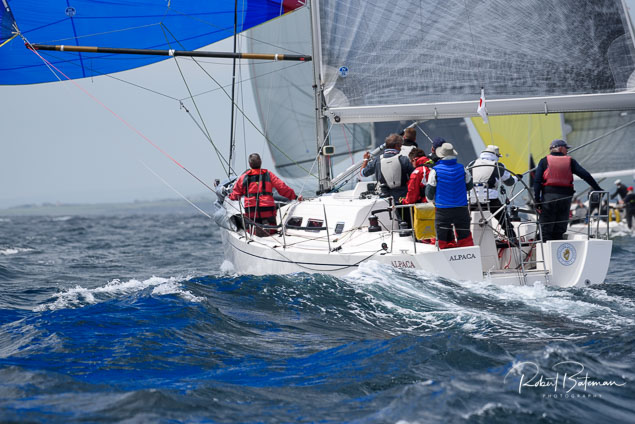
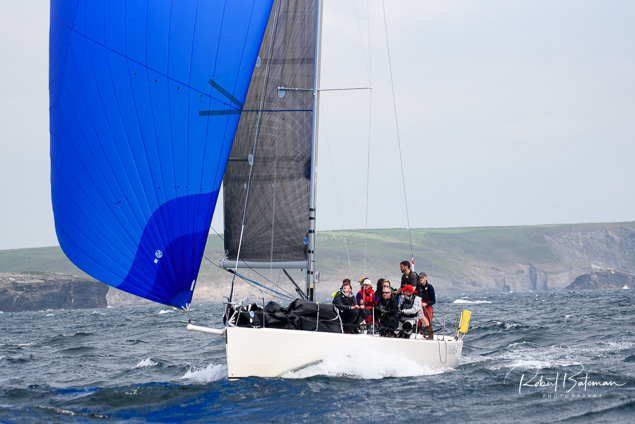
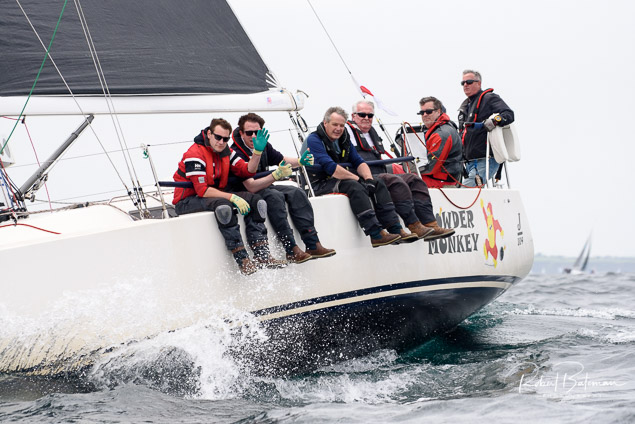

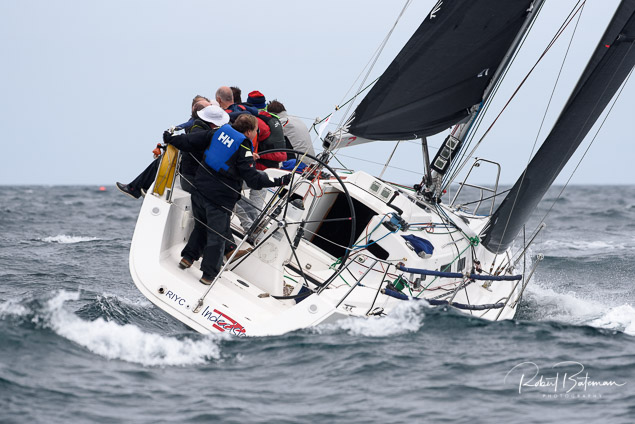


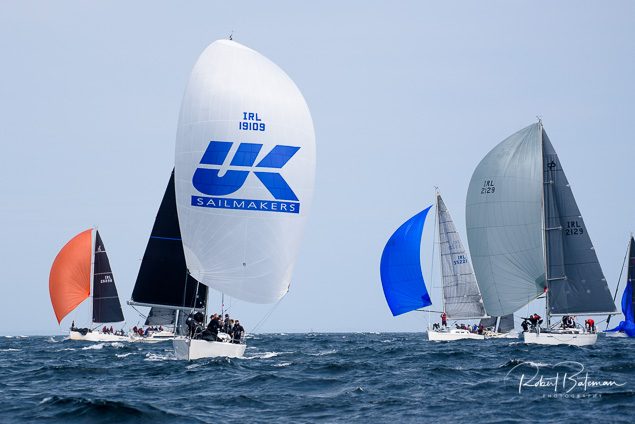
Two Wins for Greystones Grand Soleil 44 'Eleuthera' Gives Sovereign's Cup Class Zero Lead
Last year's Cork Week winner, Frank Whelan's Grand Soleil 44 Eleuthera is in the driving seat again on the south coast having scored two race wins in the first day of the O'Leary Life sponsored Sovereign's Cup off Kinsale writes Bob Bateman.
Whelan beat Conor Phelan's Ker 36/7 Jump Juice in both races today in the five boat fleet setting up an interesting dog-fight 'til Saturday.
As regular Afloat readers will know, Eleuthera's crew for this week's Sovereign's cup includes D2D winning "Rockabill VI" strategist Mark Pettit as tactician.
Maurice O'Connell, from North Sails, who was with Eleuthera for the ICRA Championships earlier this month, has moved over to Phelan's Jump for this event.
The third boat in contention in Class Zero is Denis Murphys’ Grand Soleil 40 Nieulargo from Royal Cork. Denis competed in the ICRA National Championship two weeks ago at the Royal St George YC and did not do that well, but in stronger winds, she is well known for being a bit of a giant killer and currently lies third overall.
Somewhat unusual easterly breezes for Kinsale and a lumpy sea with 16-knots provided Principal Race Officer Jack Roy with testing conditions for day one of the Cup across three courses.
Racing is scheduled to continue tomorrow morning at the Cup but easterly winds are forecast as gusting as high as 40 knots.
Results are here. All provisional and subject to protest.
Scroll down for photo gallery from Day One of the Sovereigns' Cup Class Zero action by Bob Bateman below
